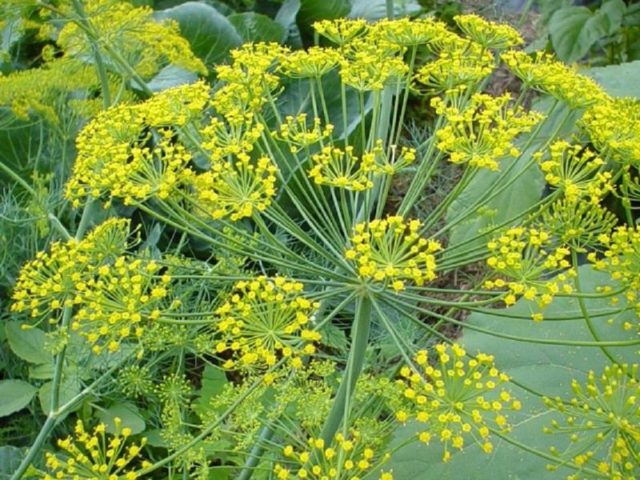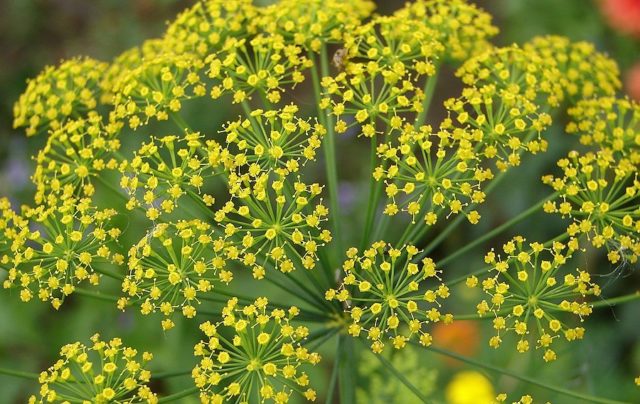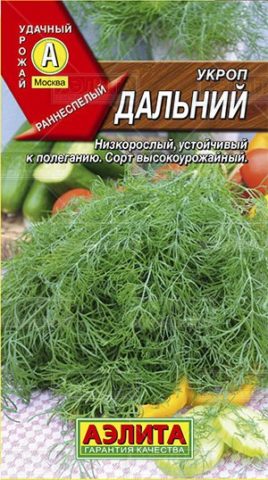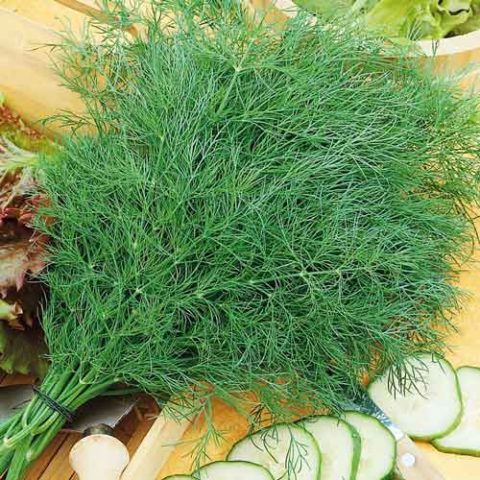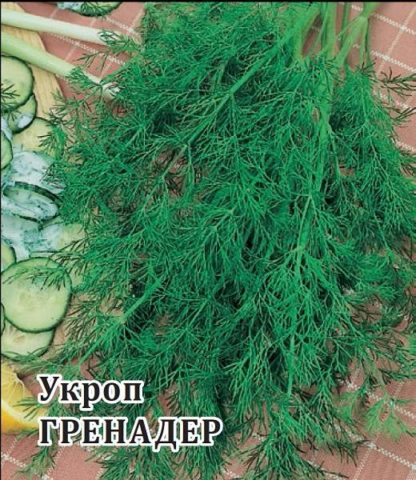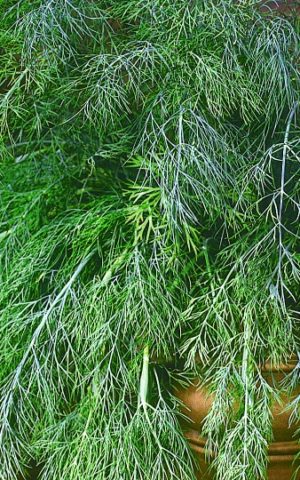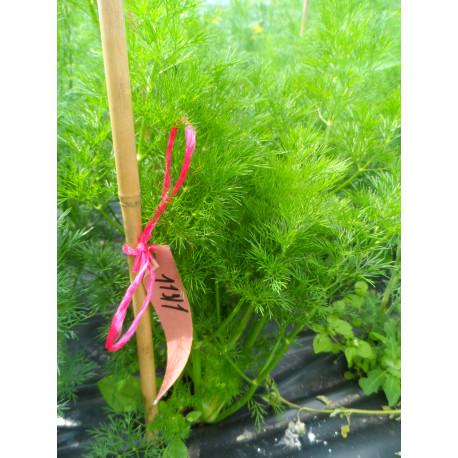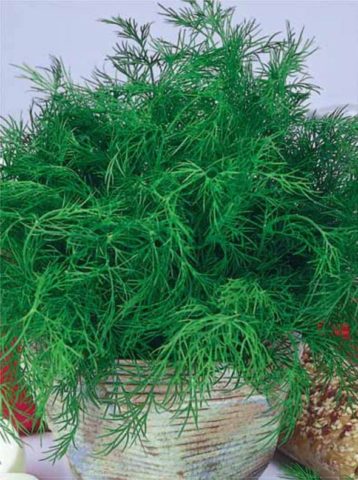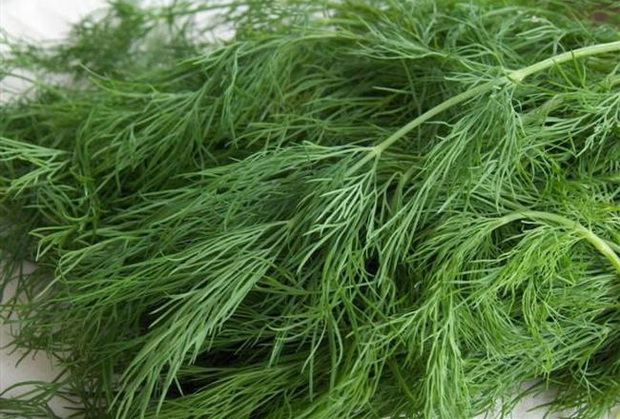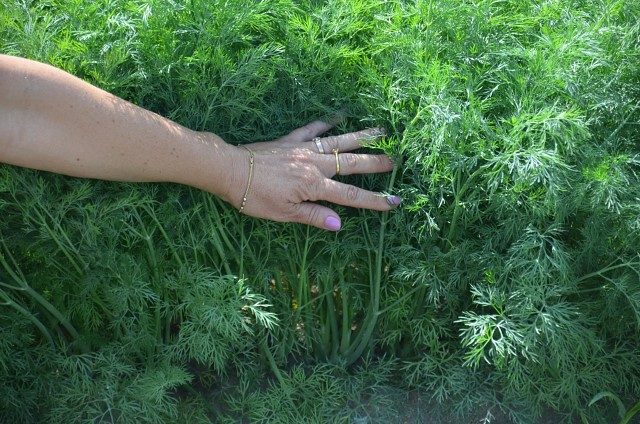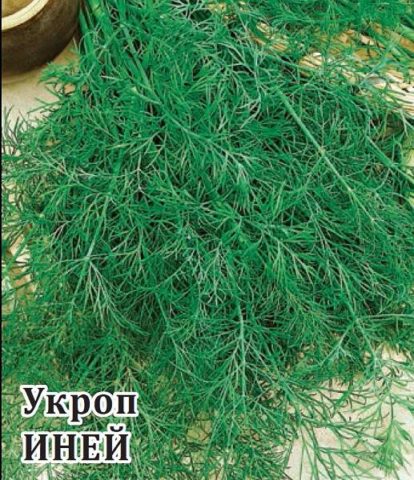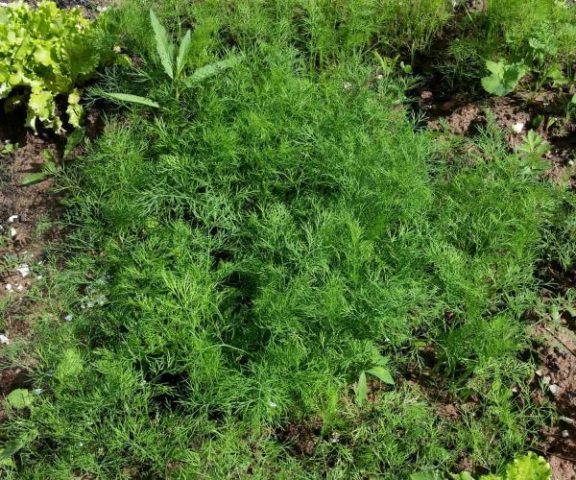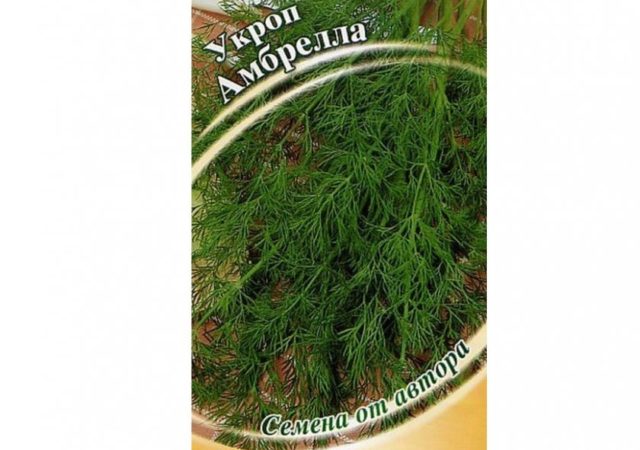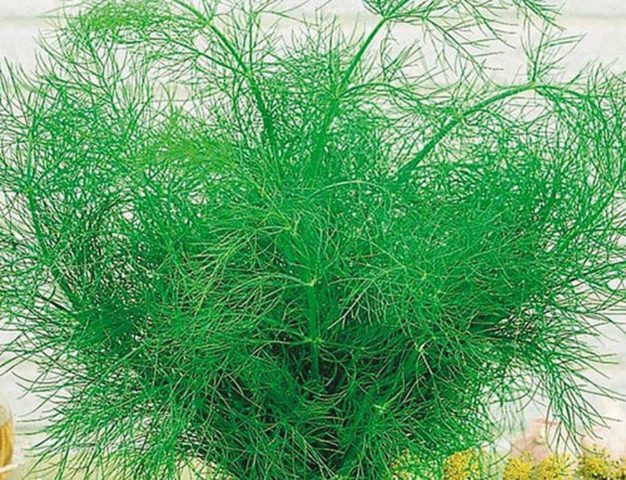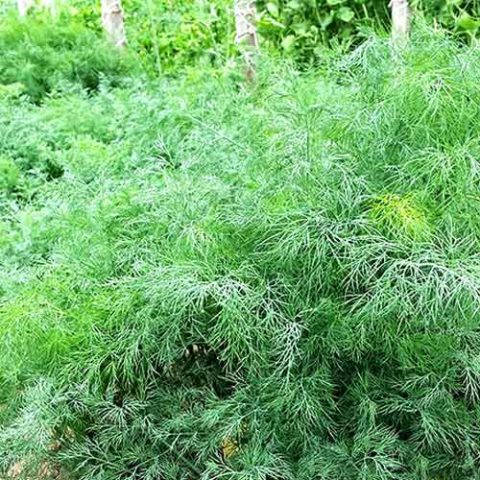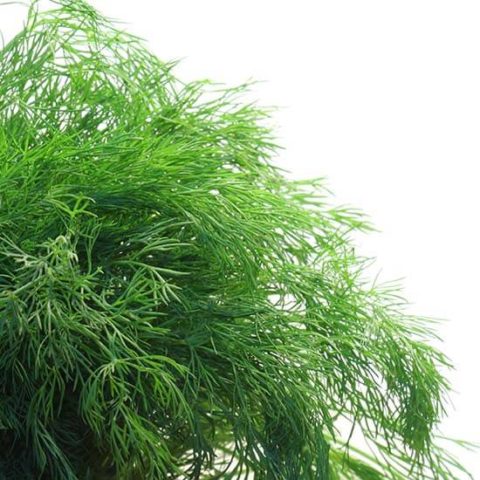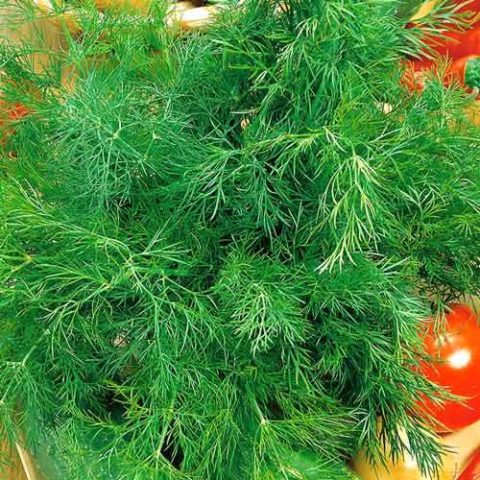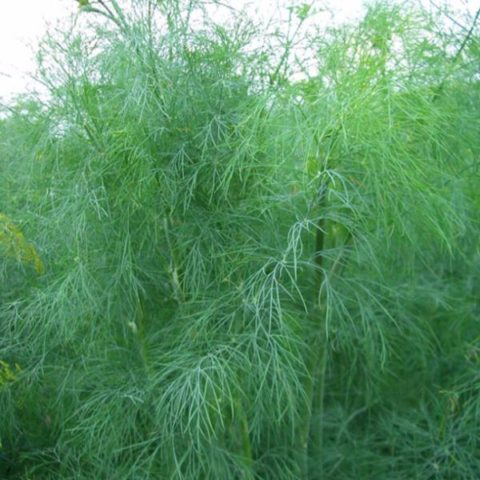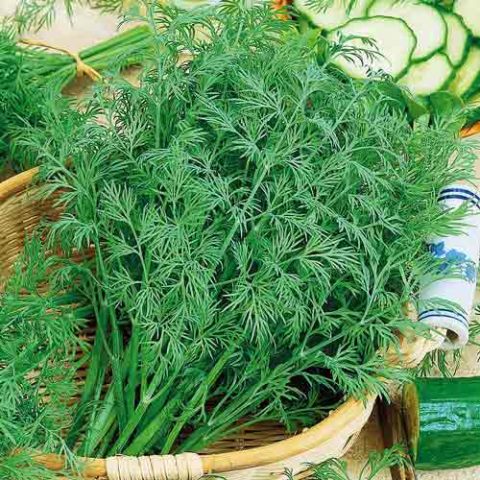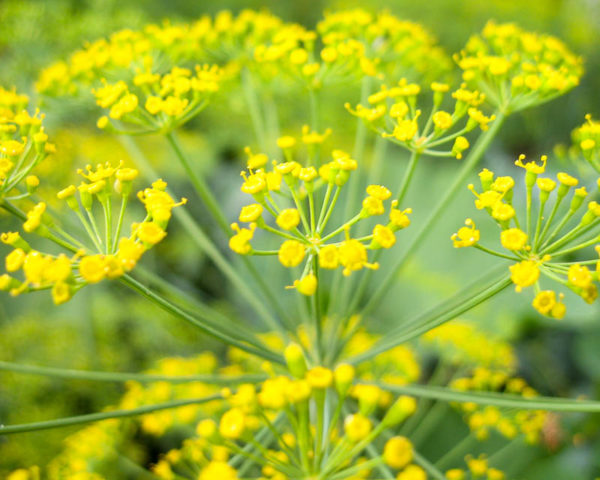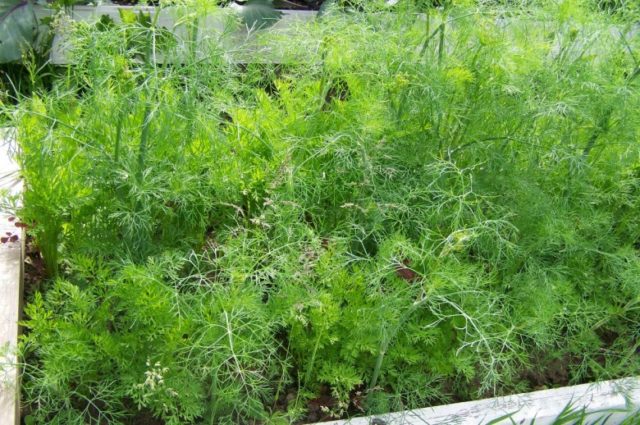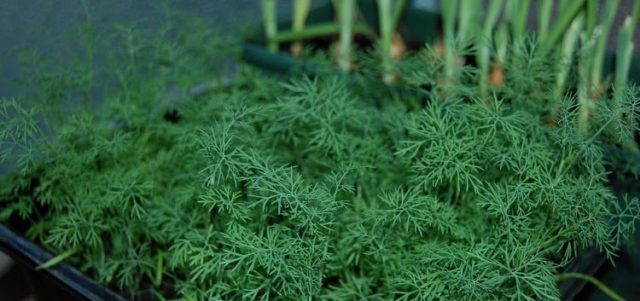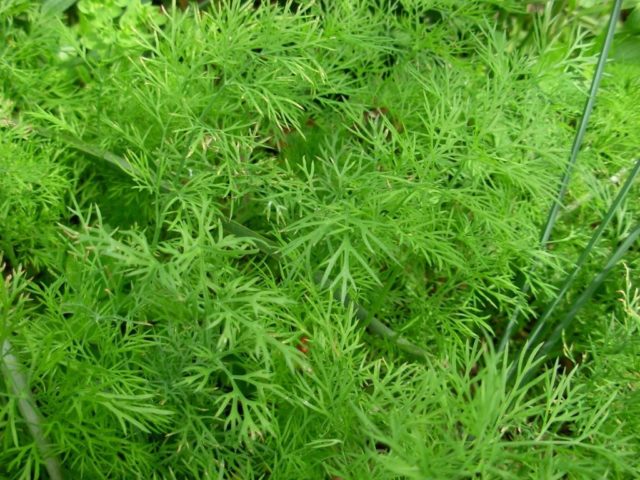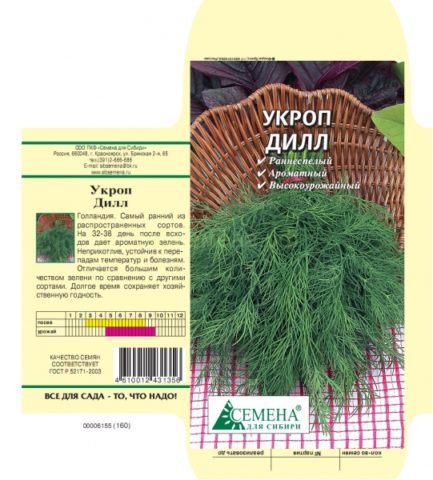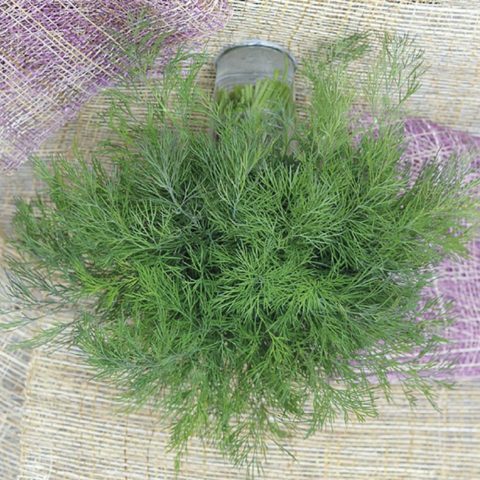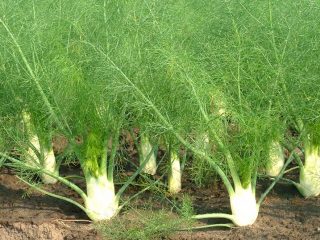Content
- 1 What does dill look like?
- 2 The best varieties of dill for open ground
- 3 Dill varieties for greenhouse cultivation
- 4 The best dill seeds for outdoor use
- 5 The most productive varieties of dill
- 6 Dill varieties with a large umbrella
- 7 What varieties of dill can be cut several times
- 8 Dutch dill varieties
- 9 New varieties of dill
- 10 Conclusion
It is difficult to find a vegetable garden that does not grow dill. Often it is not planted specifically on separate beds, the culture reproduces well by self-sowing. When blooming umbrellas appear, the ridges take on an unusual appearance. The plant gets along well with almost all garden crops.
This spicy seasoning is added to various dishes, pickles and preserves. Currently, there are many types and varieties of plants, which makes it difficult to choose. Description, characteristics of dill varieties, photos will help not only beginners, but also experienced gardeners.
What does dill look like?
Fragrant dill is a representative of the Umbrella family, a green vegetable crop. This plant has been known to mankind since ancient times. Even then, it was used as a medicine by Egyptian and Italian healers, added to salads, first and second courses.
The culture has two different kinds of plants - common fennel (a perennial vegetable) and a garden crop with a spicy aroma. The article will discuss the second type of plants.
Garden dill very often multiplies on a self-sowing site and grows like a weed. Vegetable crops are used as a fragrant spice. This herbaceous plant has an erect hollow stem 25-170 cm high. Rosettes with leaves are formed on the stem.
The leaves of the vegetable crop are feathery, strongly dissected, light green or dark green in color. They are juicy, fragrant, the length, width and diameter of the leaf blade (if you can call it that) depends on the species and variety.
How dill blooms
The dill inflorescence is represented by a complex umbrella of many yellow flowers. The size of the testis depends on the variety. In place of flowers, seeds are formed, the length of which is 4-6 mm. The photo below shows a blooming dill.
Dill seeds, along with leaves, are widely used in cooking, confectionery and various pickling and pickling. The fruits of the plant are no less appreciated by perfumers and pharmacists. Black dill seeds are widely used in folk medicine, because they contain vitamins, easily digestible salts of potassium, calcium, iron and phosphorus.
Is there a perennial dill
It should be noted that the spicy garden crop is only an annual plant. So do not trust seed sellers who describe a variety as a perennial crop.
The best varieties of dill for open ground
It's hard to just say which seeds are best to sow on the site. The fact is that there are types of culture that have different external and taste, commercial characteristics. Some plants are grown for early greens, others for the collection of useful and medicinal seeds.
Early maturing varieties of dill
Plants are considered to be early maturing, in which a little more than a month passes before the formation of the stem, and umbrellas with flowers appear after another 2 weeks.Seeds begin to be harvested 85-100 days after germination.
Leaves for greenery are cut at a height of 10-15 cm, and there are very few of them. An early maturing crop is sown to obtain greens and seeds for canning vegetables for the winter.
Popular varieties of early dill.
Redoubt it has a special aroma. Height - only 27 cm. You can cut it in a month or a little later.
Further grows up to 25 cm. The plant is not afraid of temperature fluctuations, practically not affected by pests. The color of the openwork leaves is dark green with a waxy bloom. Grown for early greens.
Gribovsky... The plant is not capricious, it is successful due to the fragrant fleshy leaves. Height - no more than 25 cm, ready for cutting in 35-40 days.
Grenadier... It grows up to 30 cm. Fragrant emerald leaves are ready for cutting a month after germination.
Dill Early Miracle... Greens are harvested one month after germination. Technical ripeness occurs in 60-70 days. The plant has a raised rosette with bright green medium-sized leaves. Height - up to 100 cm.From 1 sq. m are harvested up to 1.8 kg for herbs, for spices - up to 3.4 kg.
Dill Vologda lace high-yielding. The leaf phase lasts for a long time. The branches are juicy, tender and have a pronounced spicy aroma. Sowing seeds before winter is possible.
Dill Emerald... In each rosette of the variety, up to 12 bright green fragrant leaves are formed, up to 23 cm long, up to 17 cm wide.The height of the rosette of the vegetable crop is up to 30 cm, the bush takes about 21 cm in diameter.Up to 40 g of emerald greens is harvested from one plant , from 1 sq. m - about 2 kg. The growing period is short - only 28-33 days.
Medium ripening varieties
The marketable appearance of a mid-season green vegetable occurs in 40-50 days from the moment of germination. The plantings are distinguished by good foliage, on each plant - up to 10 large carved sheets. Moreover, they are not single, but collected in bundles. Cutting greens begins in early June. The umbrellas are ready for use in July, just when the salting starts.
Among the best mid-season varieties, gardeners distinguish the following.
Alligator... Tall green vegetable, reaches a height of 160 cm. Leaf rosettes are raised. The greens can be cut in 40-45 days, and the umbrellas are ready in 110-115 days.
Amazon... On a tall (up to 160 cm) plant, juicy and fragrant leaves of a dark green color ripen. For greens, cut after 45 days, for spices - after 100.
In the description of the Richelieu dill variety its height is indicated - about 125 cm. The leaf rosettes are semi-raised, carved. The branches are fragrant and lush. Cutting for greens is planned in 45 days, for spices - in 82 days.
According to the description variety of dill Kaskelensky It is distinguished by a large raised rosette, the height of which is about 30 cm. Harvesting of green mass can be started after 35-40 days. Flowering begins 65 days after germination. The leaves are gray-green, medium dissected, very delicate and fragrant.
Dill Fragrant bunch... Inflorescences are formed late, but there is a large amount of green mass. Plant height - 80-100 cm. Bush form: additional rosettes are formed on the stem, thereby increasing the collection of green mass. Dark green leaves can be dried, frozen. It is a great seasoning for cooking and preserving. From 1 sq. m collect up to 2.5 kg of greens, and for spices - up to 4 kg.
Late varieties of dill
Ripening of green mass of late varieties of culture begins in 57-70 days from the moment of germination. Up to 10 long, fluffy leaves are formed on each bush. Flowering and the formation of umbrellas even later.
They are especially popular with gardeners.
Kutuzovsky... Leaves are light green, large, spreading bushes. The height of the stems is about 170 cm.
Dill Hoarfrost... The plant is tall - about 160 cm.There is no waxy bloom on the gray-green leaves. The green mass is firm and fleshy. Dill twigs are fragrant. The plant tolerates a short-term cold snap well. Dill twigs are dark green, bushy plant, very aromatic. The height of the stem is up to 110 cm, the umbrella with seeds does not form for a long time, due to this it increases the green mass.
Dill varieties Borey according to the description it is late-ripening. Each rosette contains from 8 to 11 large dissected leaves of a green-gray shade with a clear waxy coating. Greens are harvested after 39-63 days, for spices - after 682-104 days. Productivity: 1 sq. m gives up to 4.2 kg for herbs and 4.5 kg for spices.
Ripening time dill Ataman - about 55 days. It is appreciated for its dark green and fragrant leaves, which are added to salads, various dishes, when salting and canning. It can be dried or frozen for the winter.
Dill variety Green lace has a universal purpose. The height of a powerful bush with dark green leaves and a waxy bloom is about 135 cm. The greens are juicy and fragrant. The umbrella does not form for a long time, so the greens can be cut for a long time.
Dill varieties for greenhouse cultivation
A green vegetable with split leaves can be grown not only outdoors, but also in greenhouses. But not all varieties of the spice plant are suitable for the greenhouse. You need to choose crops that do not reduce yields due to lack of light.
Here is some of them.
Dill Umbrella from the Gavrish company. The bright green leaves begin to be cut after 45 days, for spices - after 90. The stem reaches a height of 180-200 cm. First, green, then yellow, and when ripe, brown umbrellas of a vegetable crop are noticeable from afar.
Frost - late ripening. High-yielding variety: from 1 sq. m collect up to 2.7 kg of fragrant greens.
Kibray - bush type. The plant is not tall, but with a lot of dense lush branches. Cutting of fragrant leaves begins 3-4 weeks after germination. The green mass on the bush remains green for a long time, does not turn yellow. The market output is 4.5-5 kg of greens. The plant practically does not suffer from fungal diseases.
The best dill seeds for outdoor use
It is difficult to say which varieties of green vegetables are better and which ones are worse. For this, many parameters need to be justified. One can only note those types and varieties of dill that are especially popular.
For sowing in different regions, climatic conditions must be taken into account in order to choose varieties with certain ripening periods.
For Moscow region
The climate of the Moscow region is favorable for growing almost all types of crops for greenery. But the most popular are:
- Kibray;
- Alligator;
- Redoubt;
- Further.
For Siberia and the Urals
In these regions, the weather conditions are very similar. This determines the choice of the plant. Most often, gardeners pay attention to such seeds.
Bushy and abundant.
Lesnogorodsky and Alligator.
Kibray and Dill.
Gribovsky and Aurora.
Tatran and Dwarf.
According to reviews, dill Gem of universal purpose enjoys particular success of the Urals and Siberians. The plant is early ripening, distinguished by a raised rosette. The leaves are dark green with a bright spicy aroma, there is no waxy bloom. Harvest the plant on the greens once, pulling out the green vegetable by the roots. Umbrellas look original, as by the time of ripening they turn red. The variety is cold-resistant, frosts do not harm.
For the middle lane
In this region, you can plant the same plants that are suitable for the Urals and Siberia. You can plant a culture of another variety.
According to the description, dill variety Khanak just suitable for central Russia. The plant is prized for its large rosette with juicy, fragrant light green leaves. The vegetable is mid-season, fruitful.
The most productive varieties of dill
When choosing a variety for sowing on a plot, gardeners who grow plants for sale are guided by yield.
Among the most productive are the following types.
Dill Goblin... From 1 sq. m collect up to 9 kg of greens. Cutting can be carried out throughout the summer, since the leaves remain fresh and green for a long time, do not turn yellow.
Dill Fragrant bouquet, according to reviews, is also from the productive group. The umbrella is formed late, but the plant grows greenery throughout the season. Harvest for herbs - up to 1.7 kg, for spices - up to 4.1 kg.
Dill varieties with a large umbrella
Culture is valued not only for green mass. Many gardeners prefer umbrella dill. Popular varieties:
- Further;
- Richelieu;
- dill grenadier.
And also some others.
Carousel.
Rzheutsky.
Sevastopol.
Preobrazhensky.
What varieties of dill can be cut several times
In order for the dill greens to flow in a continuous flow, varieties are selected that can be cut off several times. The following types are popular:
- Bushy;
- Further;
- Grenadier;
- Gribovsky;
- Alligator.
There are also several more types.
Patterns.
Gourmet.
Max.
Dutch dill varieties
Of the Dutch varieties in Russia, the following are common.
Dill Goldcron bush type. Plant height - up to 150 cm. The leaves are openwork, rich green with a waxy bloom. In the photo above, Goldkron dill, it clearly shows the features of the plant. Suitable for open and protected ground. Productivity - up to 2.5 kg per 1 sq. m.
Dill variety, medium early, up to 1.5 m high. Grown for greens, which can be dried or frozen for the winter. Stems and umbrellas are formed slowly, but a lot of greenery is formed.
New varieties of dill
The varietal assortment of this culture is constantly being updated. Among the new products, the following types should be noted:
- Richelieu, Preobrazhensky and Carousel.
- A good variety of dill Sevastopol.
- Grenadier, Redoubt and Rzheutsky.
- Dill Dwarf is very early and fruitful.
It is also worth noting separately the dill Emperor, according to the description of the variety given by the Agroholding "Poisk", a bush type plant. The yield of green mass is up to 3.1 kg per 1 sq. m.
Conclusion
Dill is one of the most popular green vegetable crops on the site. After all, this plant has a lot of useful properties. For the winter, the leaves are dried, frozen, salted.
